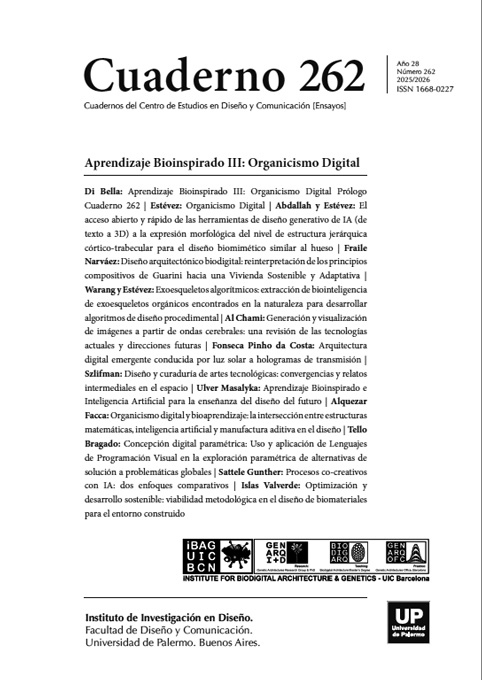Procesos co-creativos con IA: dos enfoques comparativos
Palavras-chave:
Inteligência, artificial
Resumo
Atualmente, a comunidade de design está usando uma variedade de ferramentas de Inteligência Artificial Generativa.
Referências
Alemohammad, S., Casco-Rodriguez, J., Luzi, L., Humayun, A. I., Babaei, H., LeJeune, D., Siahkoohi, A., & Baraniuk, R. G. (2023). Self-Consuming Generative Models Go MAD (Versión 1). arXiv (DOI: https://doi.org/10.48550/ARXIV.2307.01850).
Anderson, B. R., Shah, J. H., & Kreminski, M. (2024). Homogenization Effects of Large Language Models on Human Creative Ideation. Creativity and Cognition, 413–425 (DOI:https://doi.org/10.1145/3635636.3656204).
Baradaran, A. (2024). Towards a decolonial I in AI: Mapping the pervasive effects of artificial intelligence on the art ecosystem. AI & SOCIETY, 39(1), 7–19 (DOI: https://doi.org/10.1007/s00146-023-01771-5).
Boehnert, J. (2018). Design, ecology, politics: Towards the ecocene. Bloomsbury Academic, An imprint of Bloomsbury Publishing Plc.
Escobar, A. (2018). Designs for the pluriverse: Radical interdependence, autonomy, and the making of worlds. Duke University press.
Forlano, L. (2017). Posthumanism and Design. She Ji: The Journal of Design, Economics, and Innovation, 3(1), 16–29 (DOI: https://doi.org/10.1016/j.sheji.2017.08.001).
Anderson, B. R., Shah, J. H., & Kreminski, M. (2024). Homogenization Effects of Large Language Models on Human Creative Ideation. Creativity and Cognition, 413–425 (DOI:https://doi.org/10.1145/3635636.3656204).
Baradaran, A. (2024). Towards a decolonial I in AI: Mapping the pervasive effects of artificial intelligence on the art ecosystem. AI & SOCIETY, 39(1), 7–19 (DOI: https://doi.org/10.1007/s00146-023-01771-5).
Boehnert, J. (2018). Design, ecology, politics: Towards the ecocene. Bloomsbury Academic, An imprint of Bloomsbury Publishing Plc.
Escobar, A. (2018). Designs for the pluriverse: Radical interdependence, autonomy, and the making of worlds. Duke University press.
Forlano, L. (2017). Posthumanism and Design. She Ji: The Journal of Design, Economics, and Innovation, 3(1), 16–29 (DOI: https://doi.org/10.1016/j.sheji.2017.08.001).
Publicado
2025-04-07
Como Citar
Sattele Gunther, V. (2025). Procesos co-creativos con IA: dos enfoques comparativos. Cuadernos Del Centro De Estudios De Diseño Y Comunicación, (262). https://doi.org/10.18682/cdc.vi262.12250
Seção
Artículos
Los autores/as que publiquen en esta revista ceden los derechos de autor y de publicación a "Cuadernos del Centro de Estudios de Diseño y Comunicación", Aceptando el registro de su trabajo bajo una licencia de atribución de Creative Commons, que permite a terceros utilizar lo publicado siempre que de el crédito pertinente a los autores y a esta revista.


